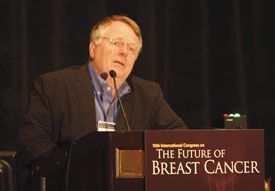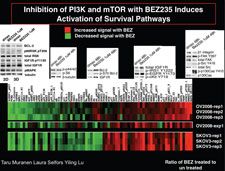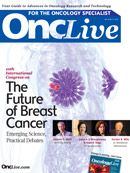Publication
Article
Oncology Live®
Resistance Strategies in Focus: Combinations Target Multiple Pathways
Author(s):
Advances in the understanding of tumor biology and a robust drug development pipeline are combining to form a 'perfect storm' of opportunity for personalized cancer research to make a leap forward.

Gordon B. Mills, MD, PhD.
Advances in the understanding of tumor biology and a robust drug development pipeline are combining to form a “perfect storm” of opportunity for personalized cancer research to make a leap forward, according to Gordon B. Mills, MD, PhD.
Mills, however, said researchers are going to have to develop strategies for overcoming resistance to targeted therapeutics, which he said have had “an unexpected high rate of failure.”
Mills, the keynote speaker on the opening day of the conference, is co-director of the Institute for Personalized Cancer Therapy and chair of the Department of Systems Biology at MD Anderson Cancer Center in Houston, Texas.
He said scientists are now able to understand tumors “with a breadth and depth” previously unavailable, and that a “wonderful toolbox” of nearly 900 cancer drugs, including 125 in breast cancer alone, is in various stages of investigation.
“We have an opportunity now of capitalizing on our new ability to characterize patients’ tumors and this toolkit to hopefully engender a perfect storm that is going to make a change in how we manage patients and move forward,” he said.
Mills, however, said the oncology community is “entering an era of information overload.” Researchers have to make sense of the flood of data generated by high-throughput technology, which now enables genome sequencing for $1000 to $2000, he said.
“It is generating data but not knowledge, and certainly not the wisdom to manage patients. It’s noise until we know what to do with it,” he said.
Overall, Mills said, targeted therapies have had limited success in fighting tumors, often achieving a benefit for specific populations of patients for a short time before recurrence. “We need to understand who will benefit and who will not,” he said.
3 Types of Resistance Identified
Mills said a key step lies in understanding resistance mechanisms in cancer cells, and listed 3 major types of resistance: intrinsic resistance, or genetic aberrations; selected resistance, engendered at a genetic level by the therapy itself; and adaptive homeostatic mechanisms by which the cells stay alive in other ways after therapy.
He is working to build mathematical models that can define “emergent properties” in complex cell signaling pathways and, for example, predict such effects of targeting a particular node as the loops that are activated and the unexpected reactions.
Mills said single drugs will not be able to achieve results. Instead, he said rational combinatorial adaptive resistance therapy (CART) is needed to attack resistance in different ways.
“Many of the drugs that we are using, particularly in targeted therapies, when they hit their targets turn off the pathways that they are supposed to, but because the cells attempt to come back into homeostatic equilibrium, you turn off pathways that have been activated [while] you turn on others,” Mills said.
He said that activity “could represent or identify synthetic lethality or optional targets, or targets that you could combine together rationally and in an efficient manner, to come forward and find the system where you can make all of the cells die.”


Mathematical modeling, left, is used to analyze cell lines exclusive interviews treated with a PI3K inhibitor. Schematic depiction is at right. From research by Taru Muranen, Laura Selfors, and Yiling Lu.
Promising Combination Analyzed
Using reverse phase protein arrays, his research team is starting to build a human proteomics atlas. The Cancer Genome Atlas has contracted with the team to analyze 11,000 samples across 22 diseases.
“We are beginning to capture new information at the protein level that was not captured at the RNA level, and amplifying on the previous clustering system,” he said.
One particularly promising strategy under study is the combination of BEZ235, a novel oral agent from Novartis that inhibits both the PI3K and mTOR pathways. Since other pathways become activated, the team added a BCL2 inhibitor.
“You put the two together and you have complete wipeout,” Mills said. “I’ve spent many years trying to do synthetic lethality screens. We’ve never seen anything like this.”
He noted, however, that the concept of CART as an anticancer strategy extends beyond any specific therapy under study.









